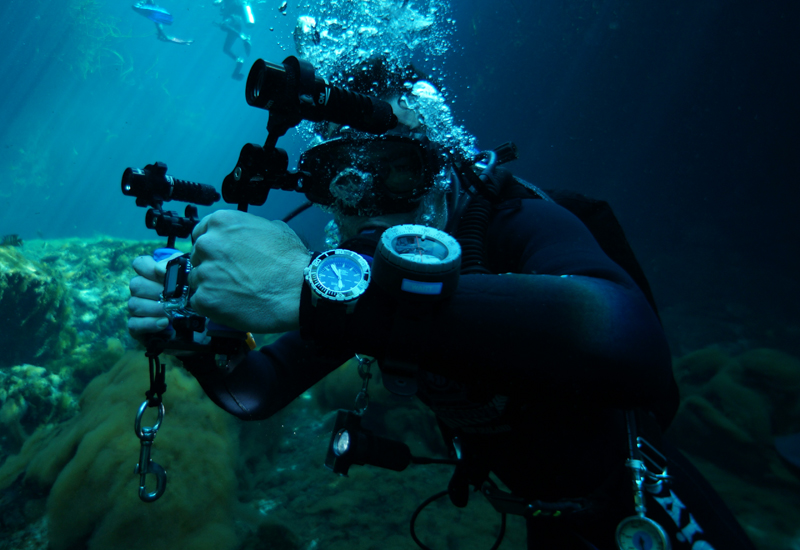In the first of our series of dive watch related Q&As, Stan Betesh shares his thoughts on how the diving watch industry has evolved and where it is going.
Deep Blue Watches is an American company based in New York that specialises in diving watches.
1. How have divers’ watches evolved through their history and how do you think we will see them continue to develop?
The original dive watches that were manufactured had a strict purpose – either for military or professional application such as deep sea exploration. These are called Tool Watches. They performed a specific function. As consumers wished to live vicariously through their dreams of deep sea exploration, adjustments in aesthetics were made while keeping the same basic format.
Water resistance became a battleground of competition as dives reached new depths. Today we are seeing an increase in new materials and components being used on dive watches such as ceramic or sapphire bezels and adjustable wetsuit extensions on bracelets, not to mention the increase use of luminous properties
2. What are the fundamental functions that separate a diver’s watch from a standard or outdoorsy model and what are a diver’s priorities in a watch?
The standards for a true dive watch have been formed by the International Organization for Standardization ( ISO for Short). ISO 6425 has become the guideline for true battle-ready dive watches.
Some of the requirements are: unidirectional bezel, minute markings on the dial, accuracy tests, running second hand with luminous tip and much more. Regular sports watches have no requirements other than users’ requests.
3. When designing divers’ watches how do you make them commercial and combine a diver’s requirements and elements that will appeal to the general consumer?
The Basic look will always be there – case with divers bezel – either an outer or inner bezel. Since Deep Blue collaborates with National Geographic explorers we are given much input into the needs of divers. Most important is the luminosity and being easily readable because of the nature of diving in water that is sometimes violent and rough. Since lume plays a huge part of any dive watch, we work on the lume design inward. Most dive watches are three hand so we focus on oversize diver hands. Obviously colour plays a big part as well as case size.
4. When a retailer is thinking about stocking brands with a strong diver’s watch offering what do they tend to look for in the watches and why?
There is nothing stronger than a relationship with true explorers who represent the brand as opposed to celebrities who only ‘desk dive’. This assures the watches have a true performance record about them. Rolex History was built on its ability to be water resistant.
Equating a dive watch that has true water resistance of over 200m insures a quality timepiece that will perform. Retailers want brands that will give their customers the best value as well as performance and reliability.
5. What do you think has been the most exciting recent development in divers’ watches and why?
At the moment it has to be tritium tubes. The gaseous self-contained vials that glow 25 years without any outside power source has to be one of the biggest developments because now we have a higher capacity available to be placed in watches – T-100 mci. Previously only 25 mci was allowed on any watch but now four times more tritium mci may be placed on the dial .
What’s really exciting is that the technology has been approved in the UK but no where else in Europe. It has been available in the USA and Canada but the real excitement is now available in the UK. Deep Blue is at the forefront of Tritium tubes on watches with over 10 models in its collection.

